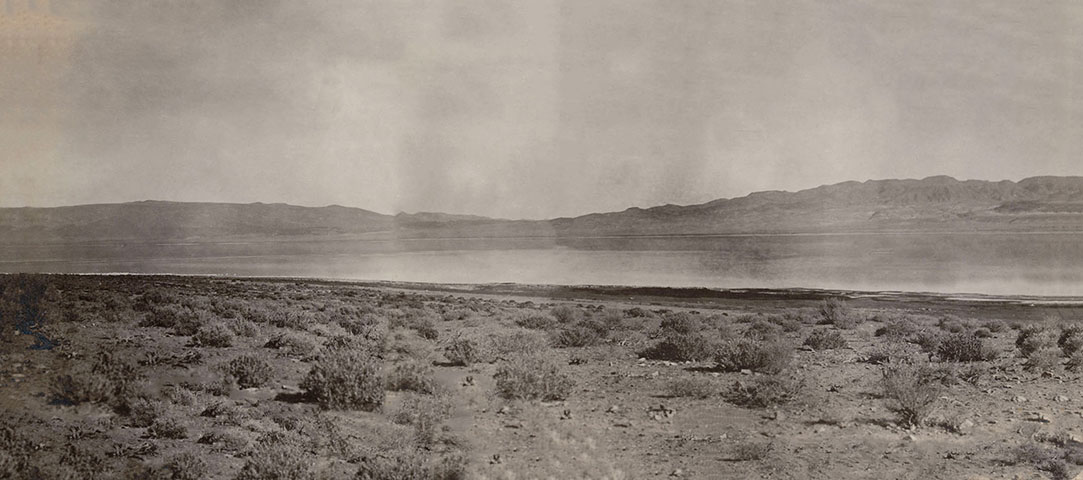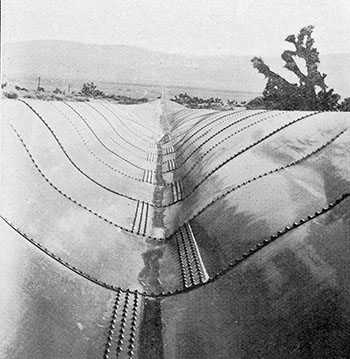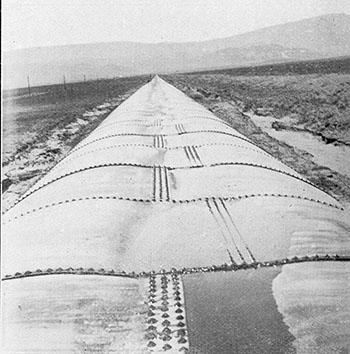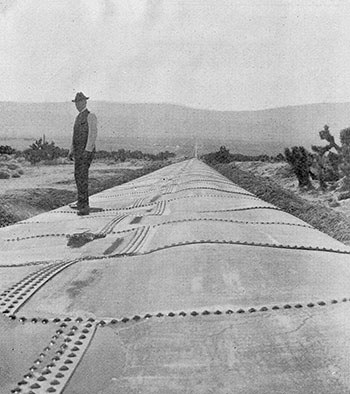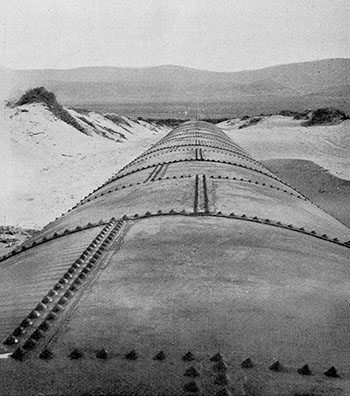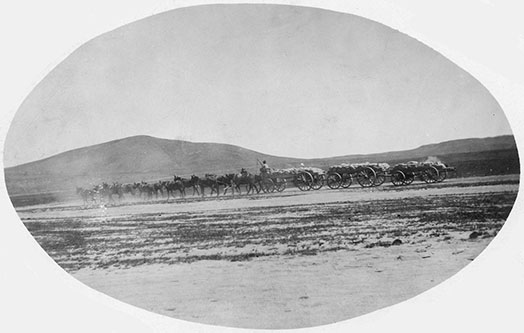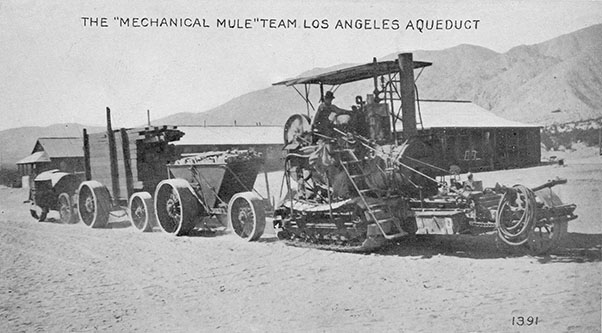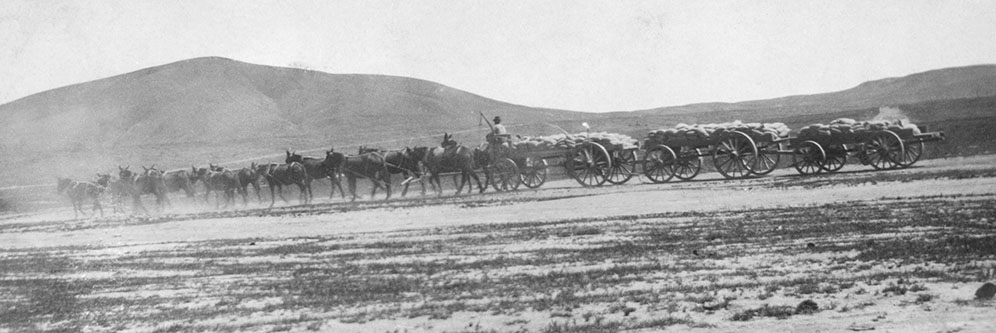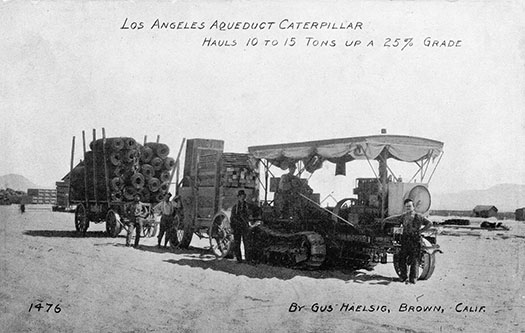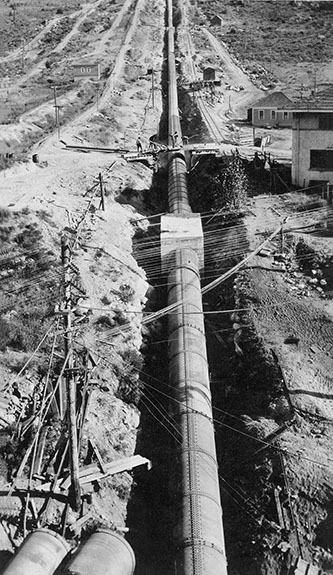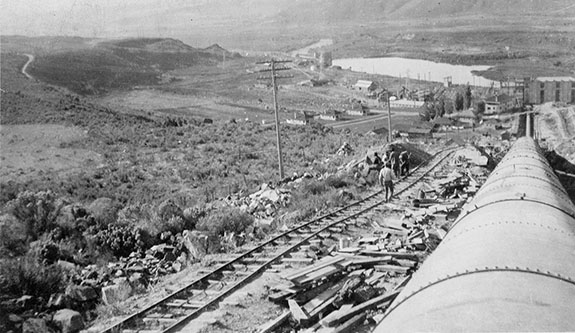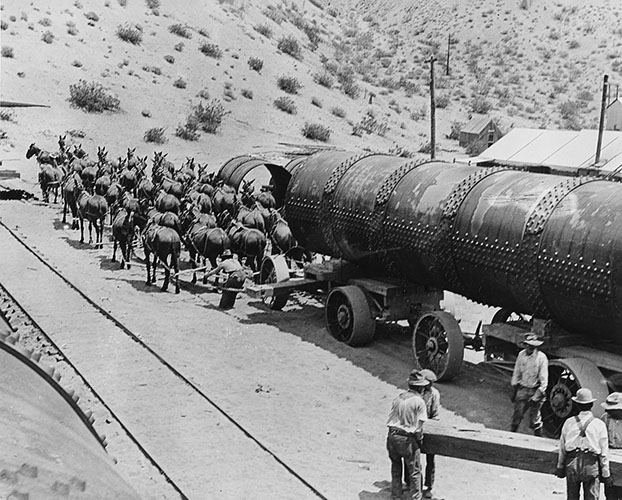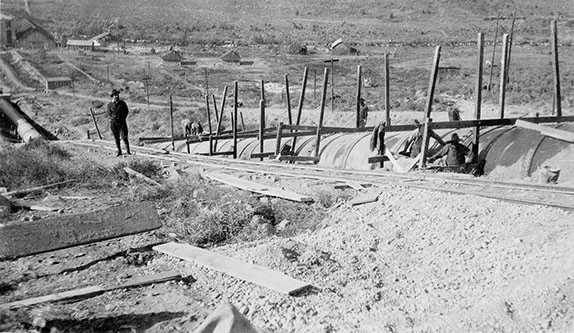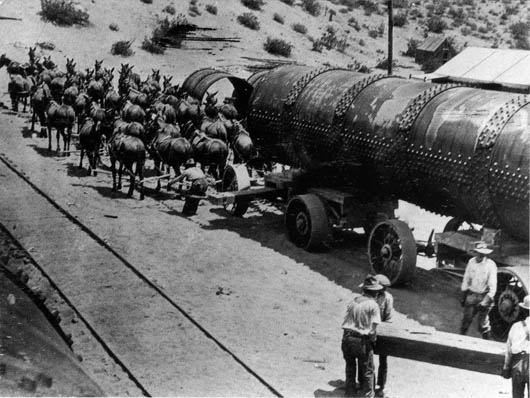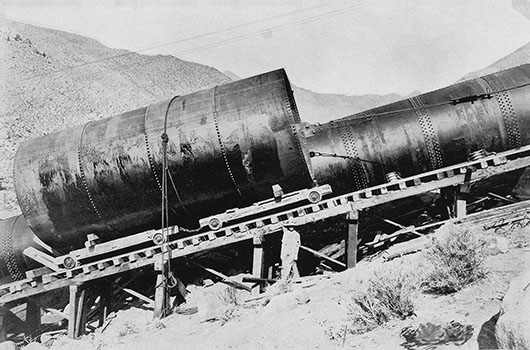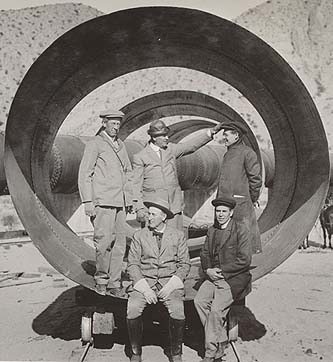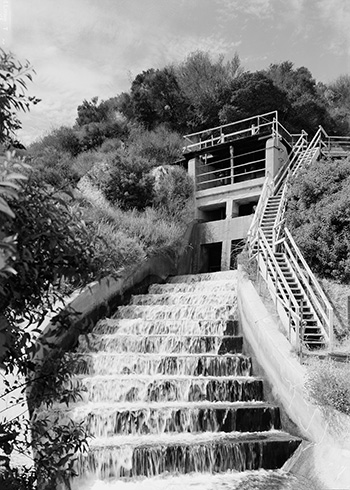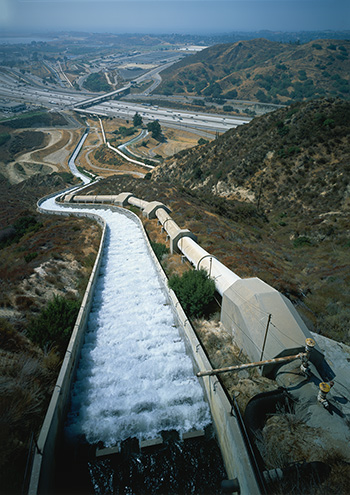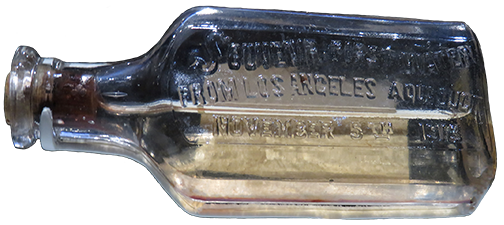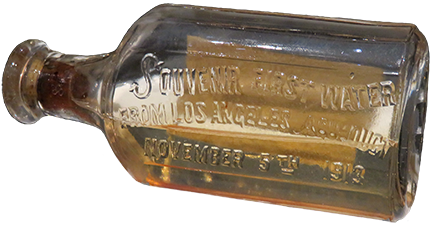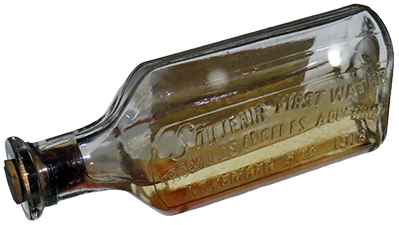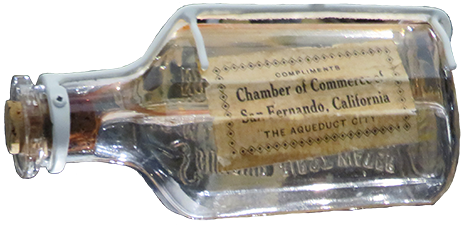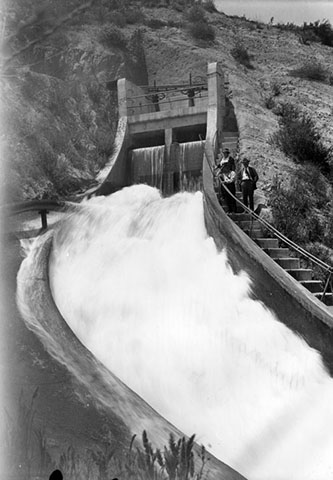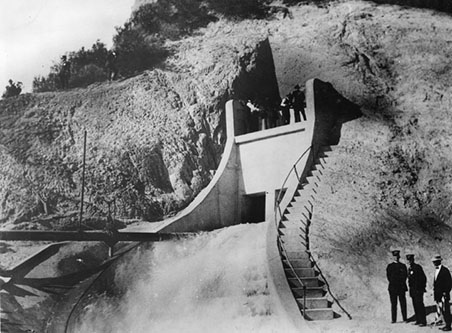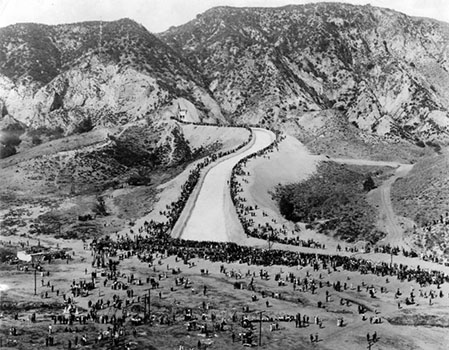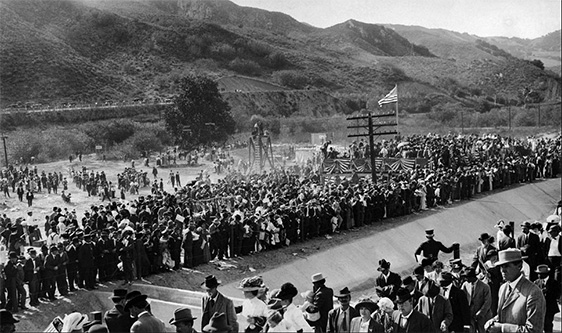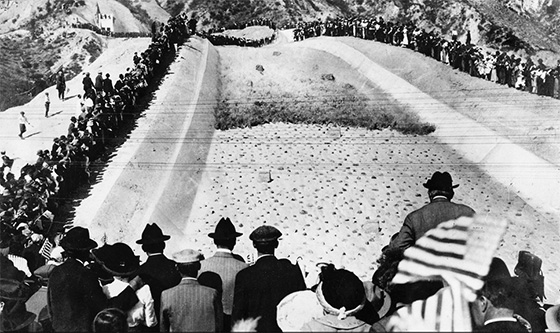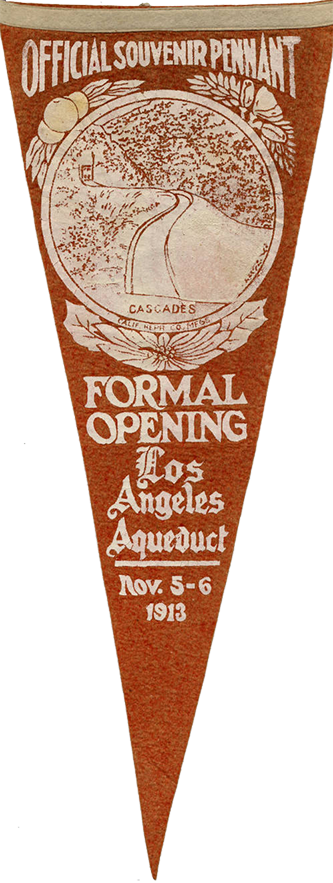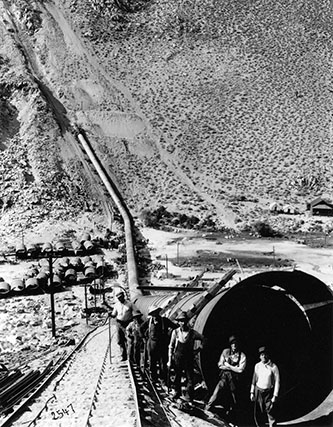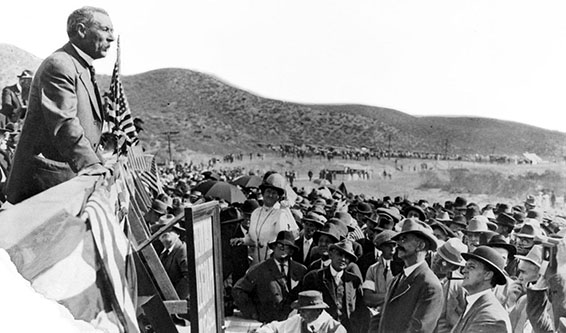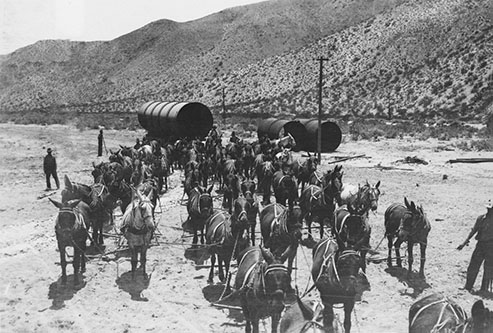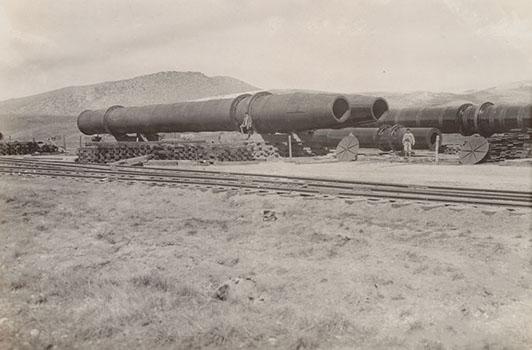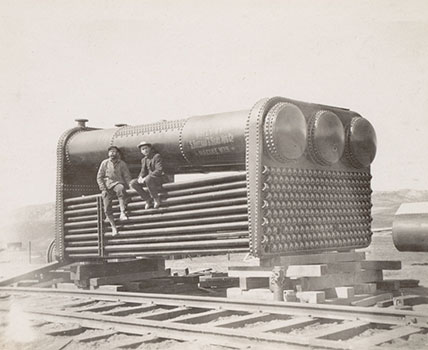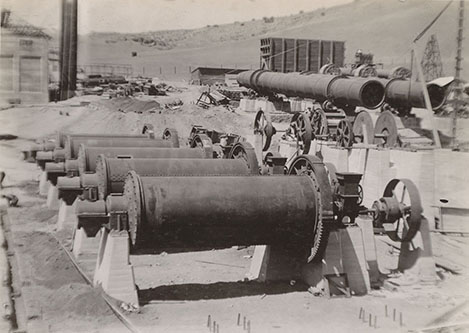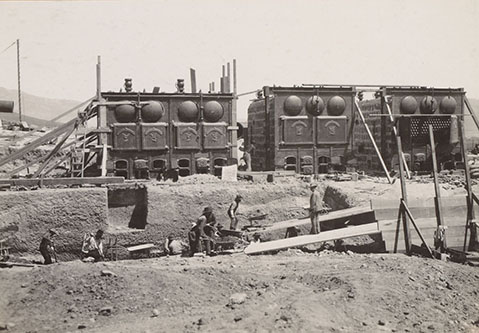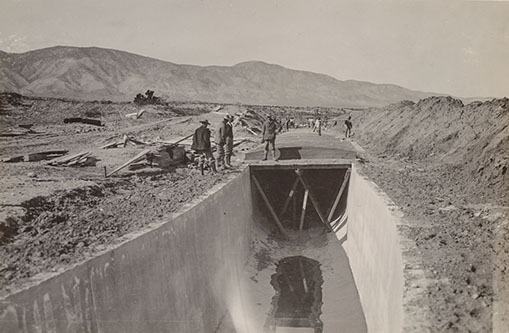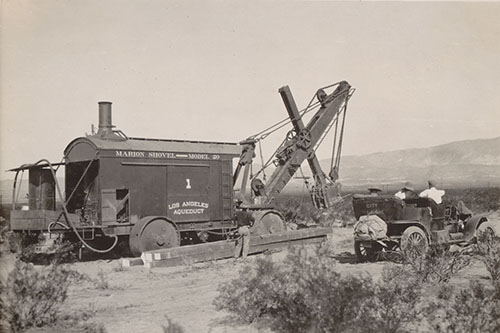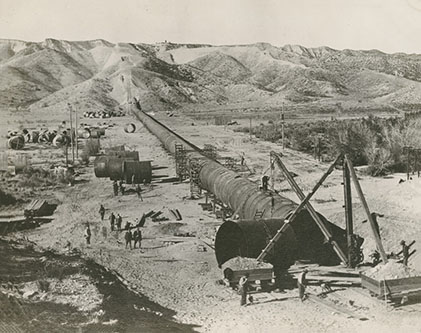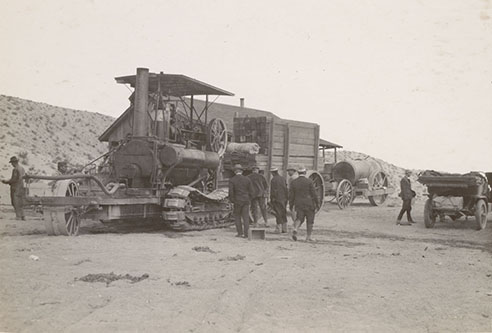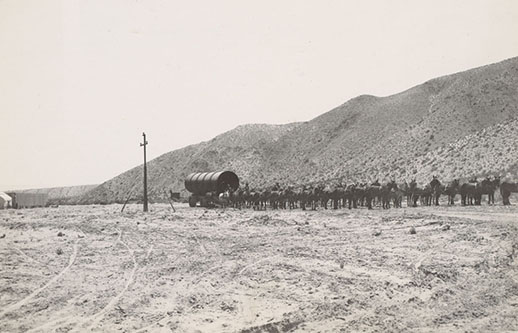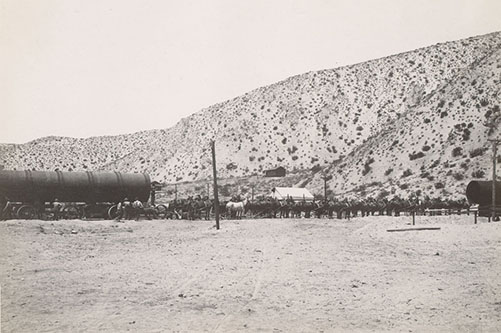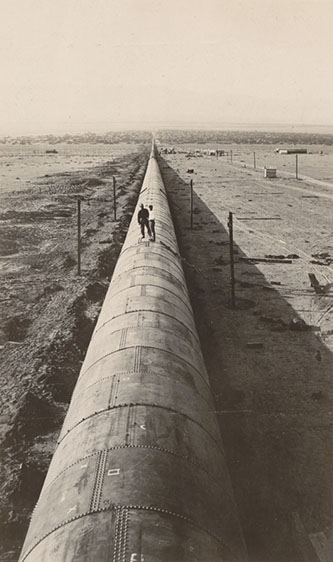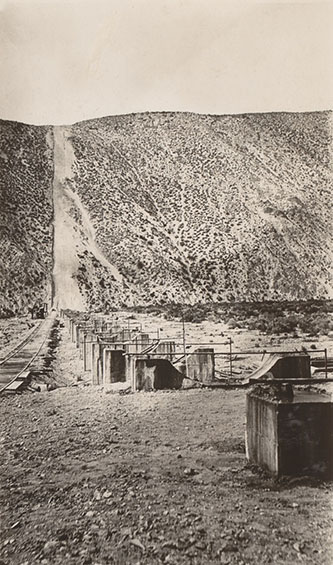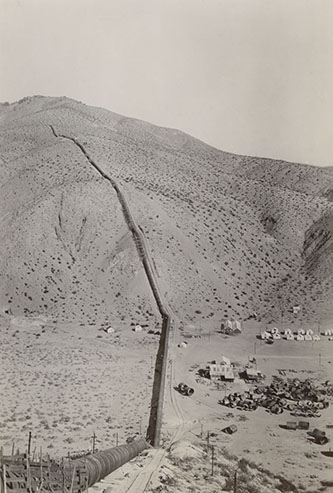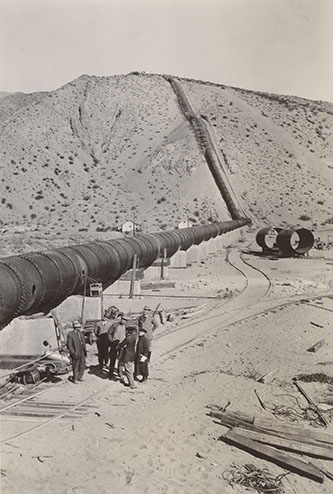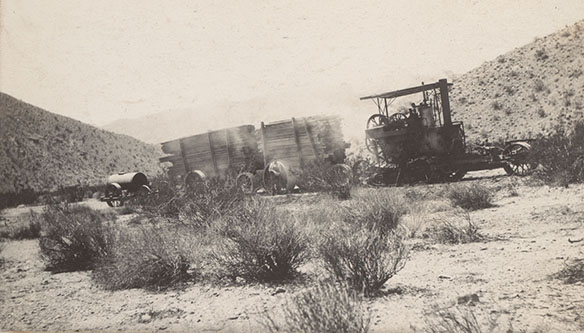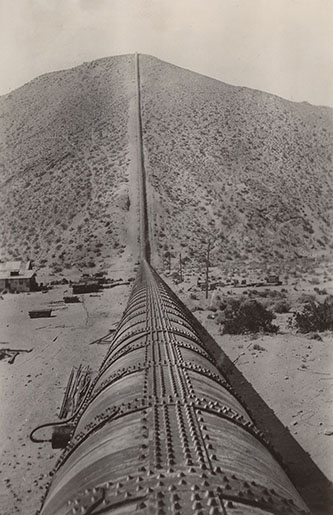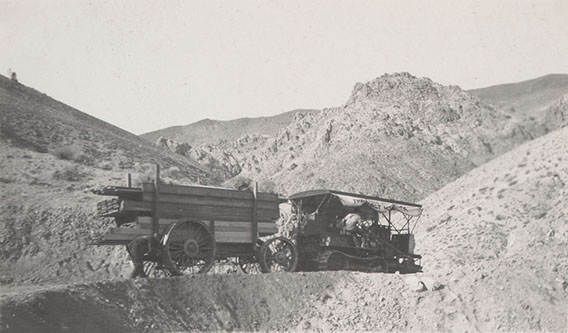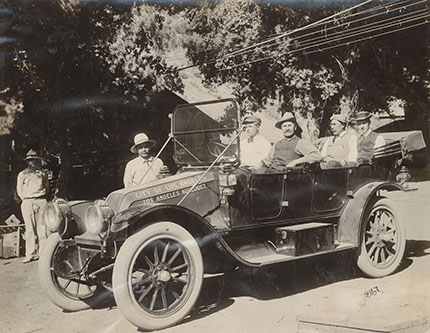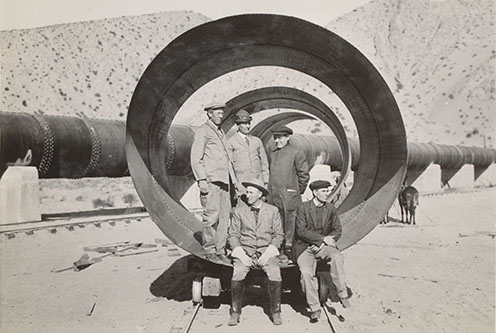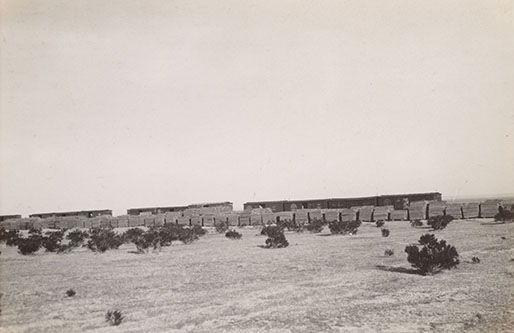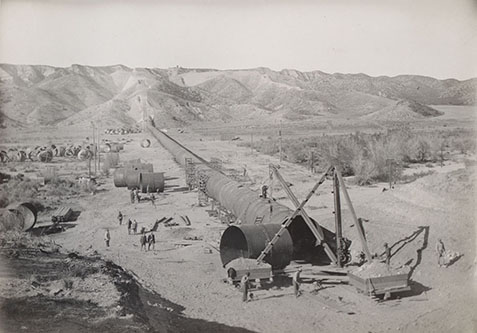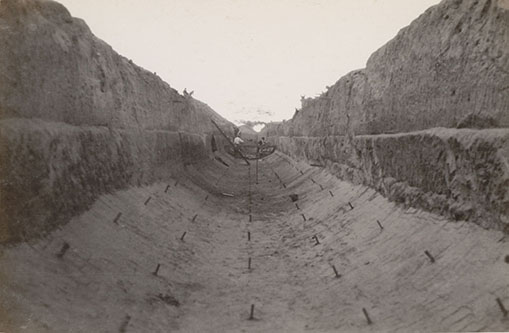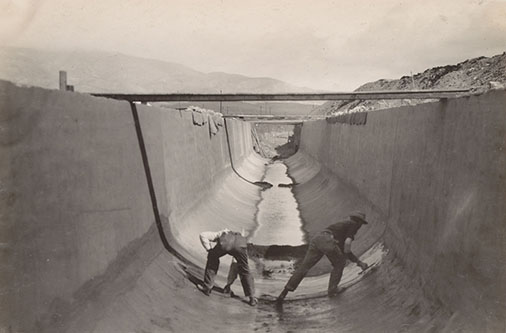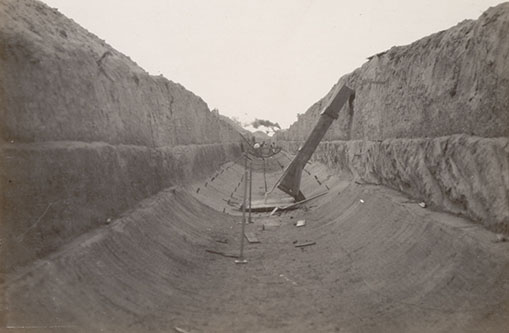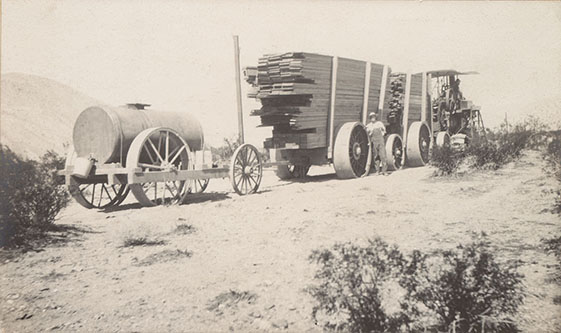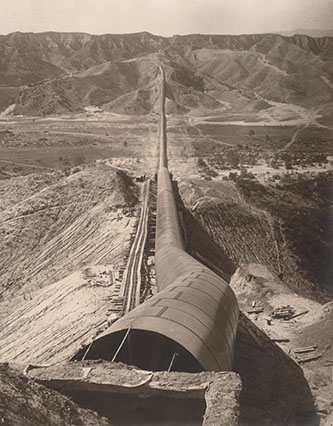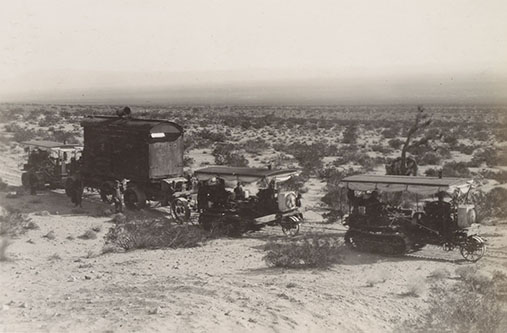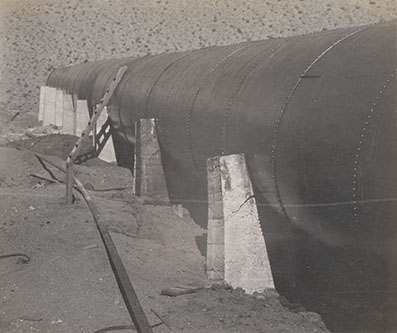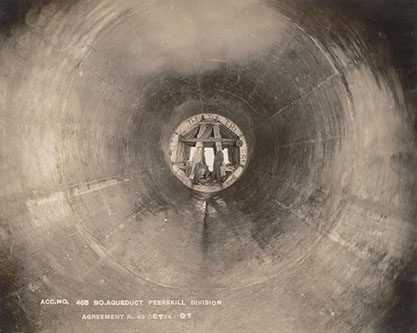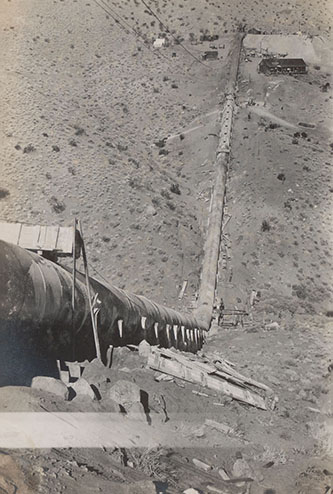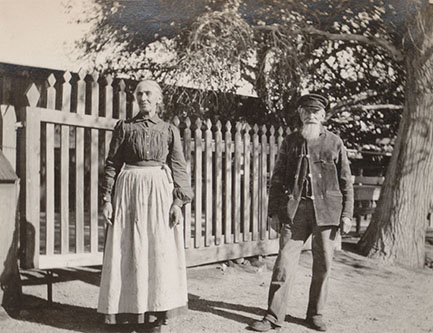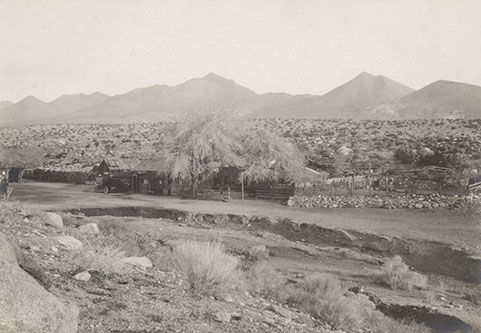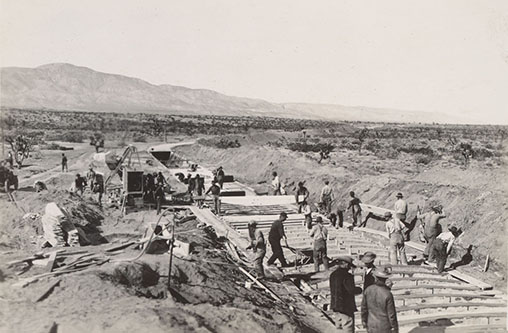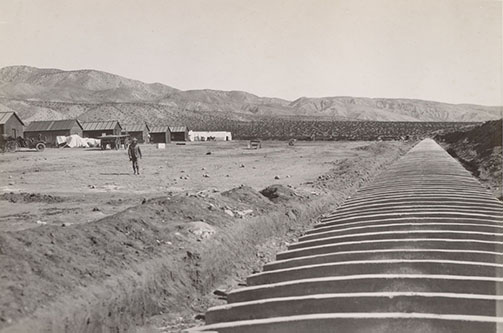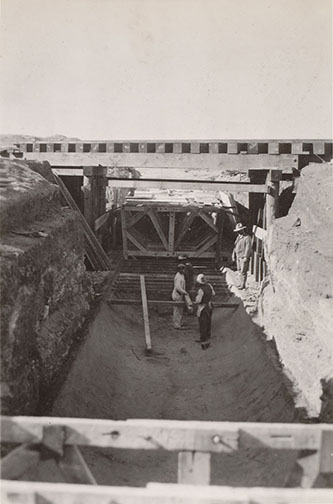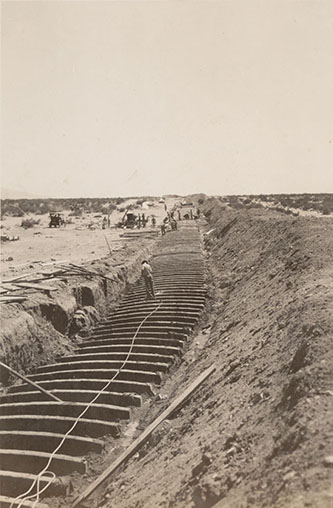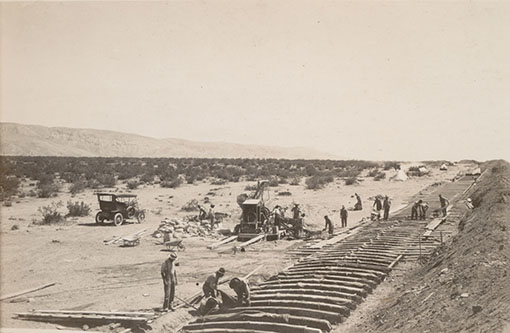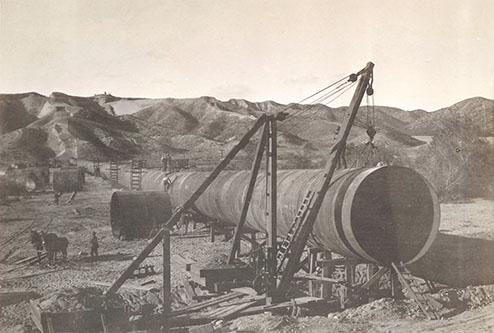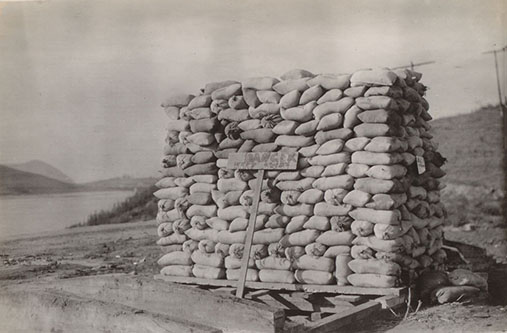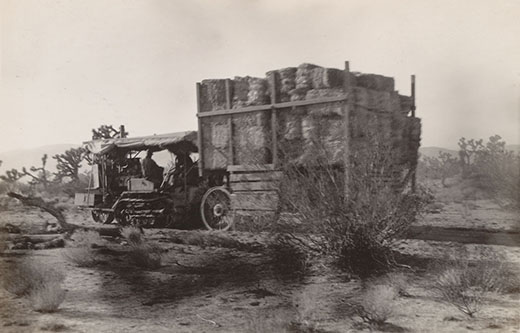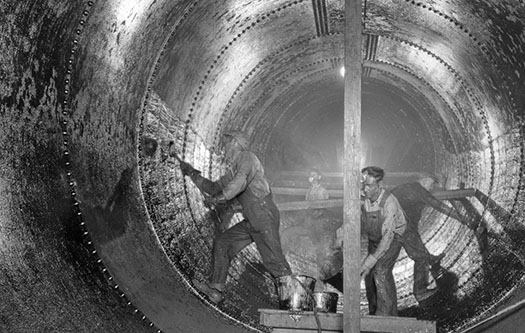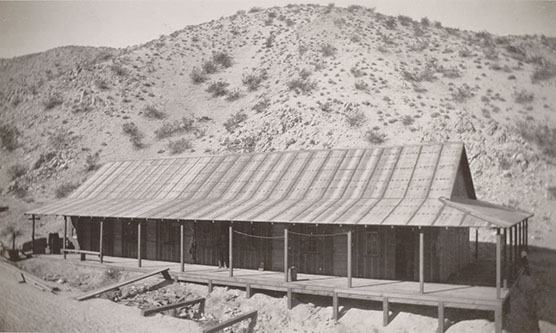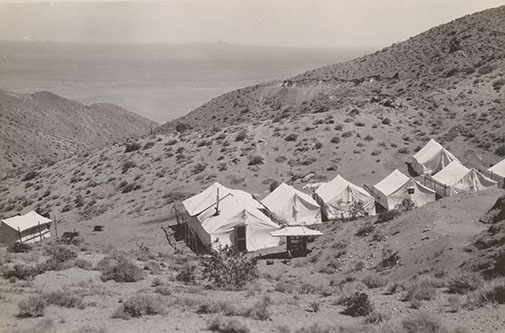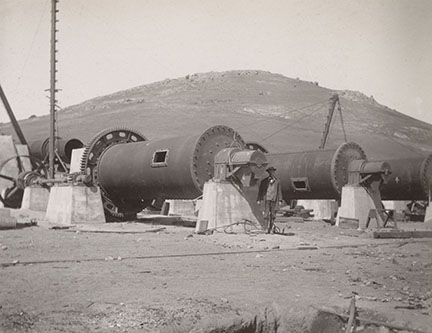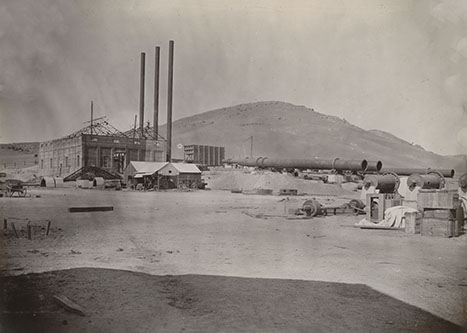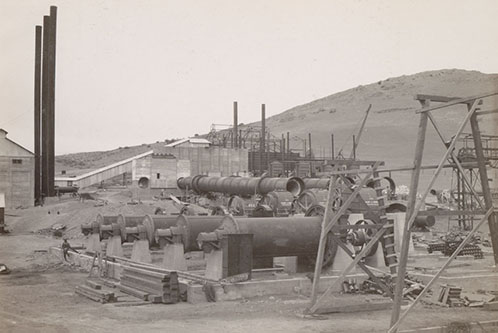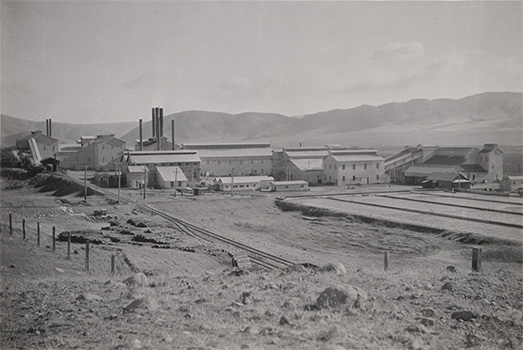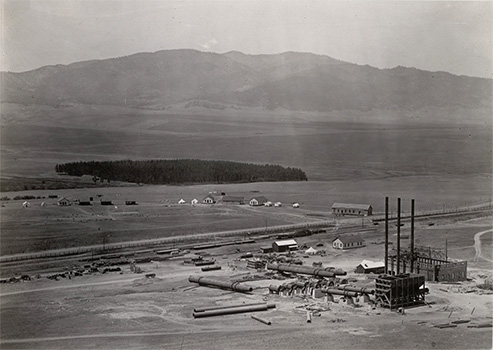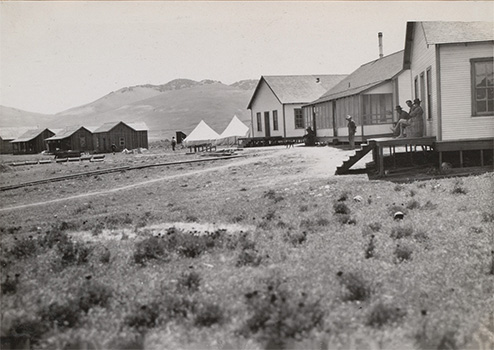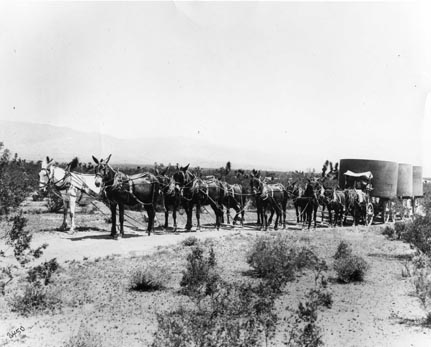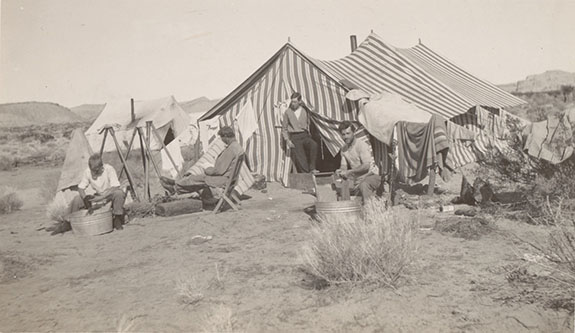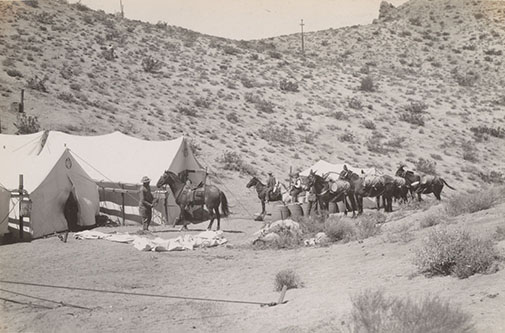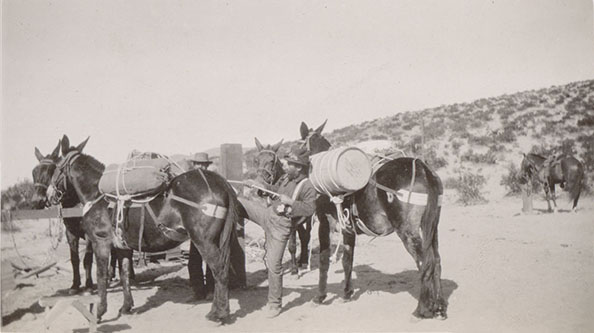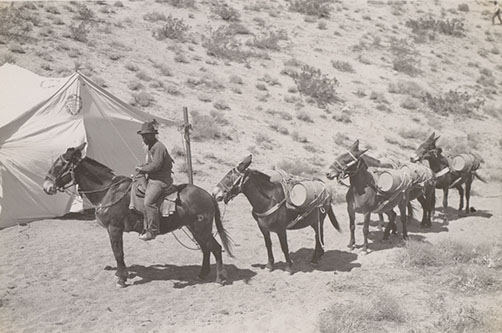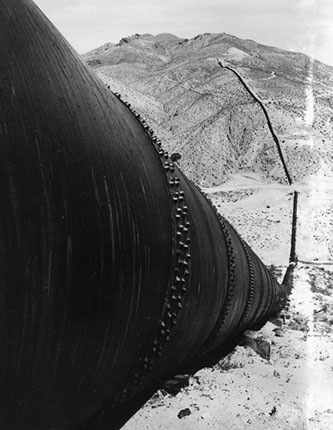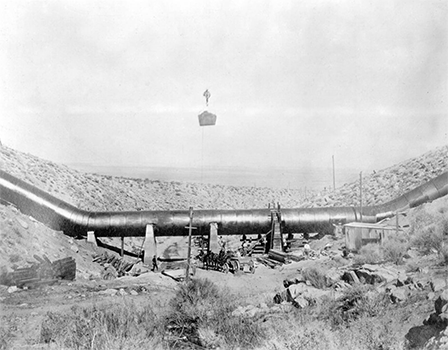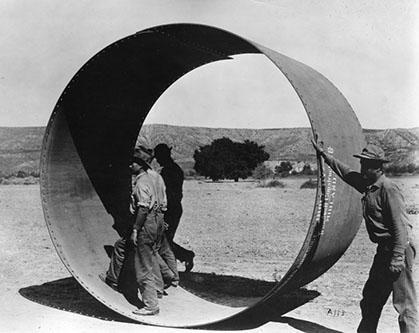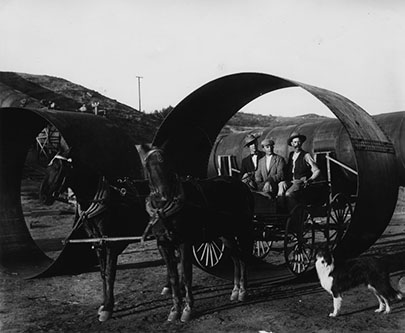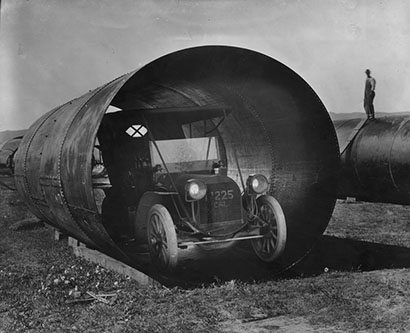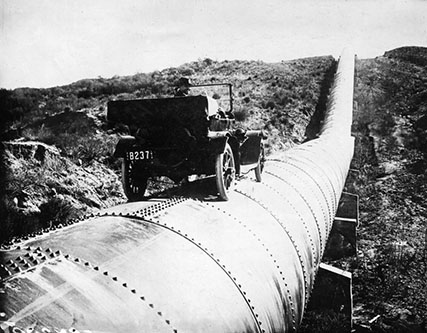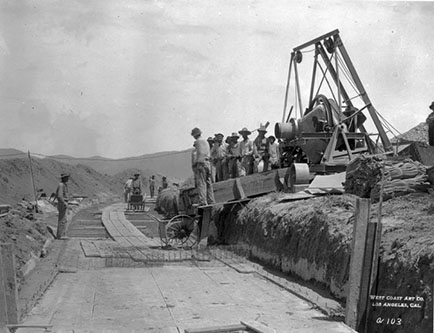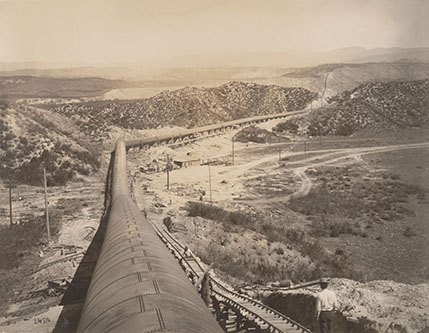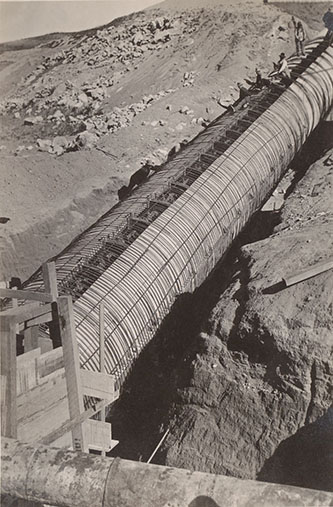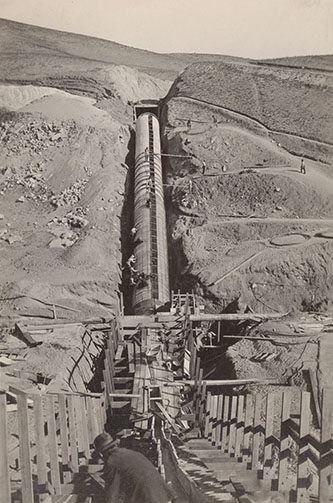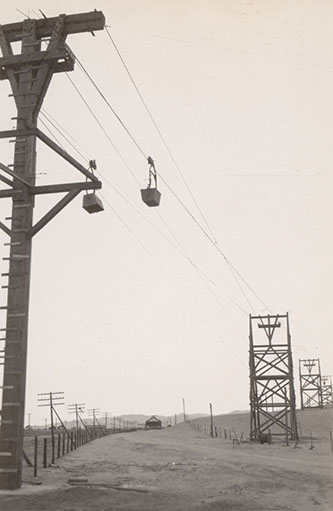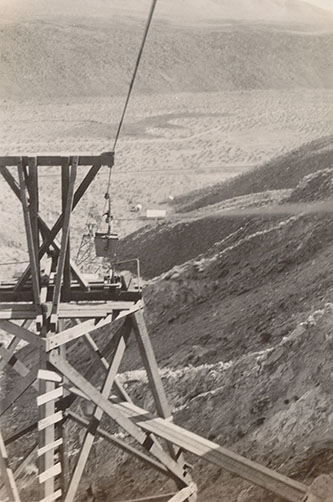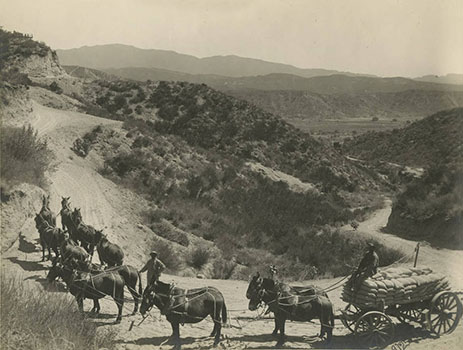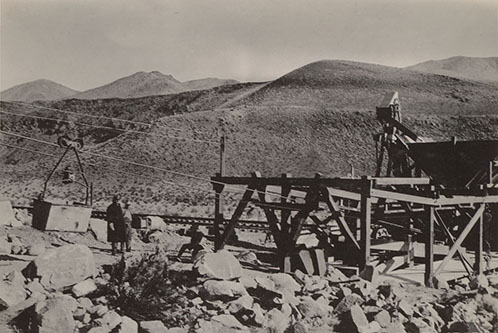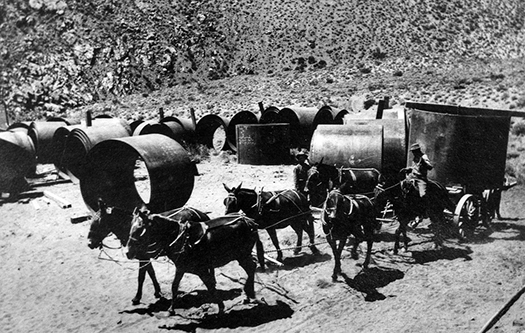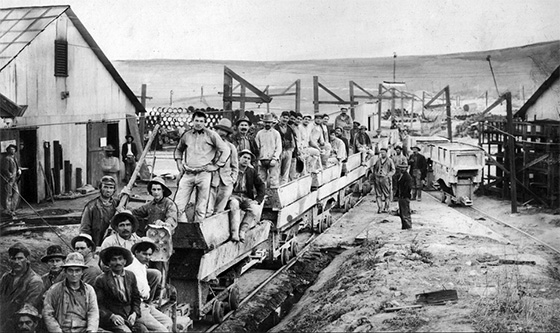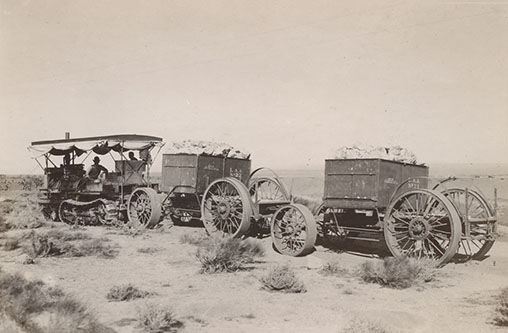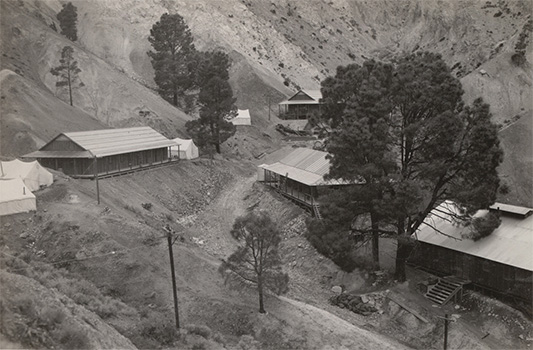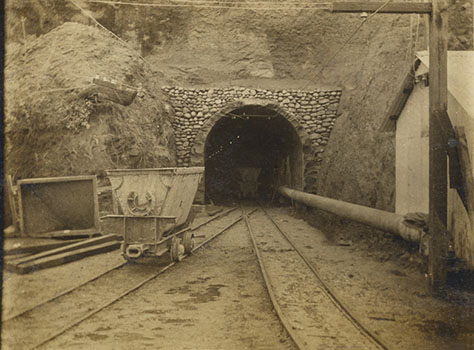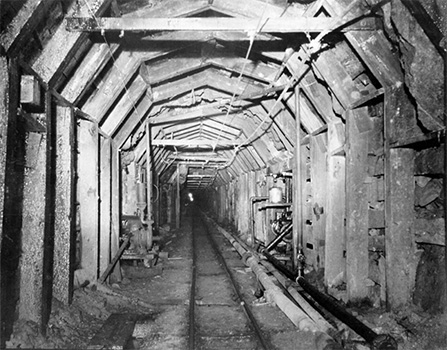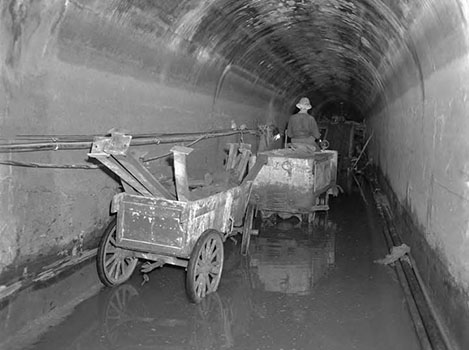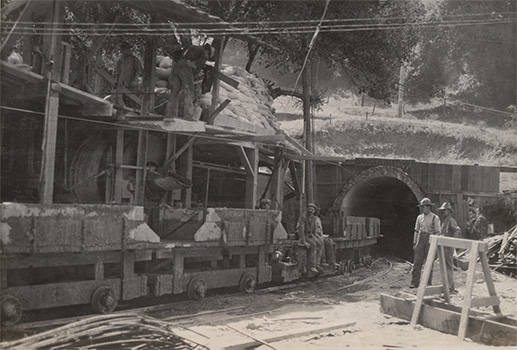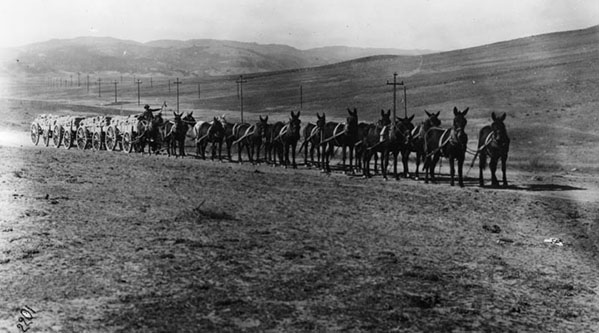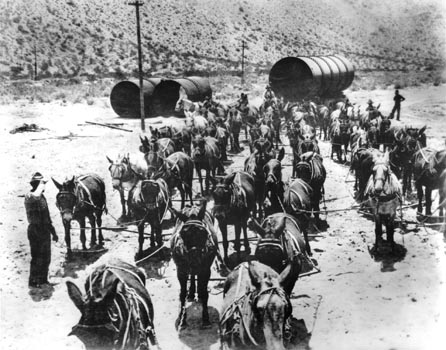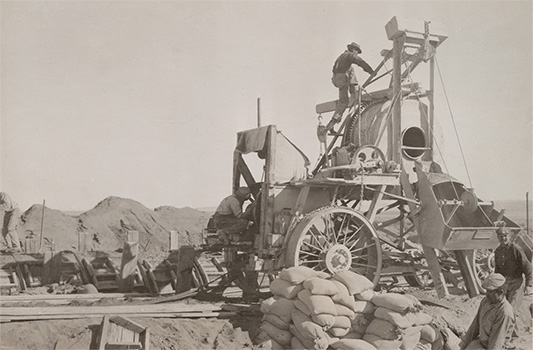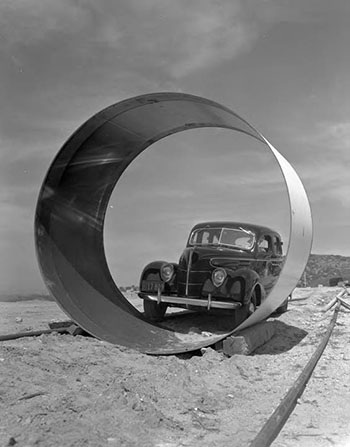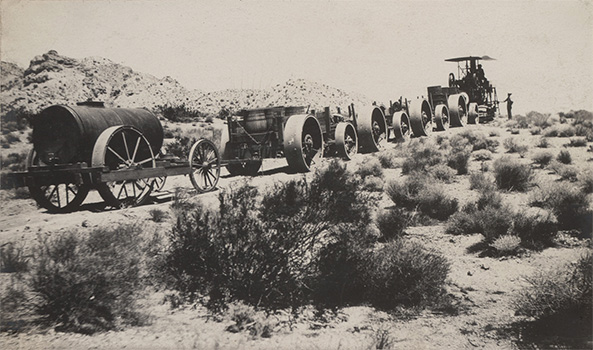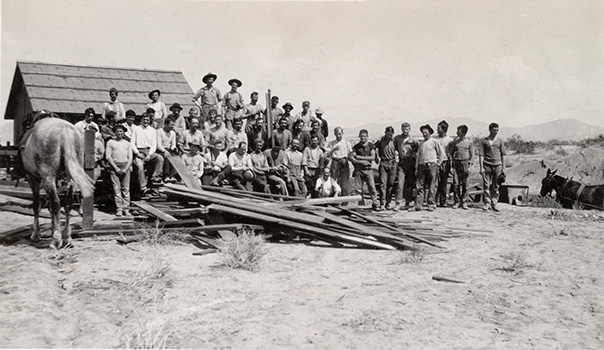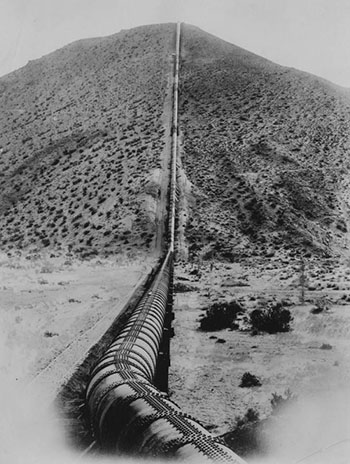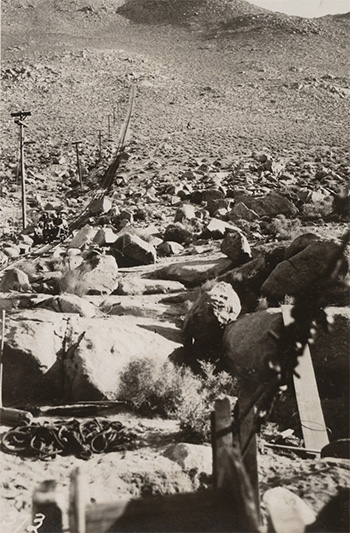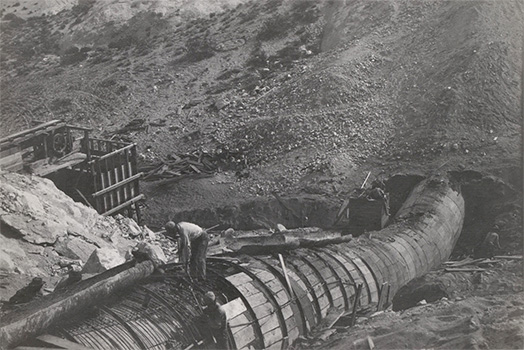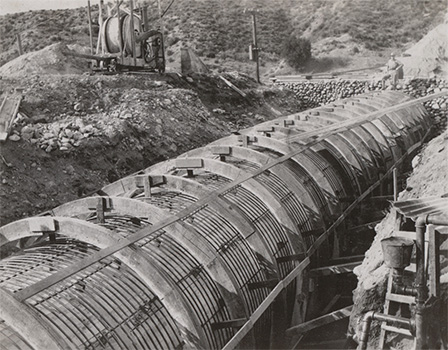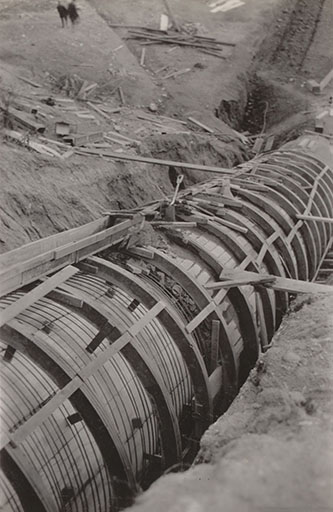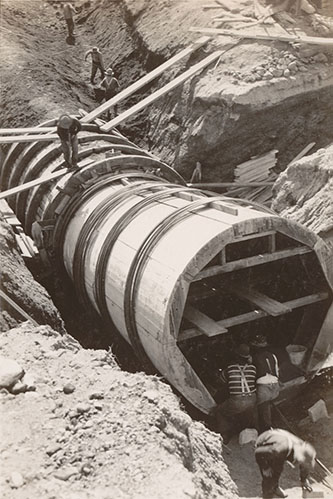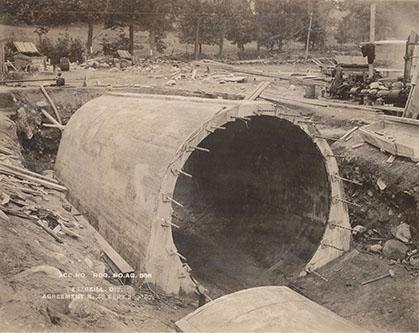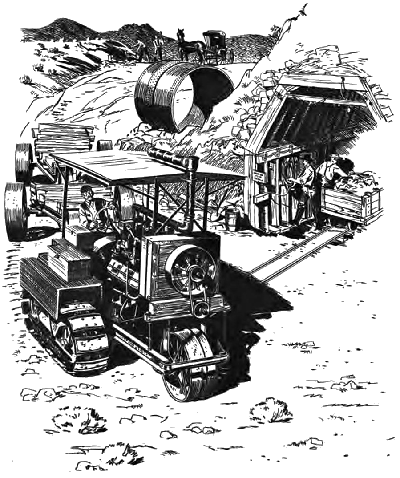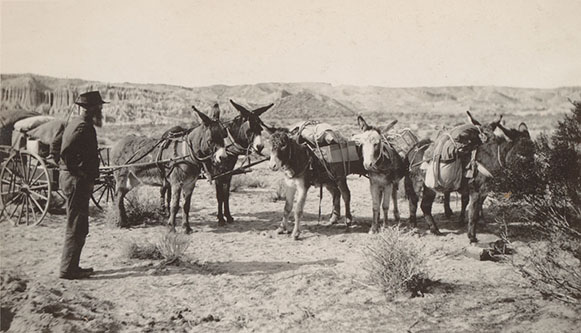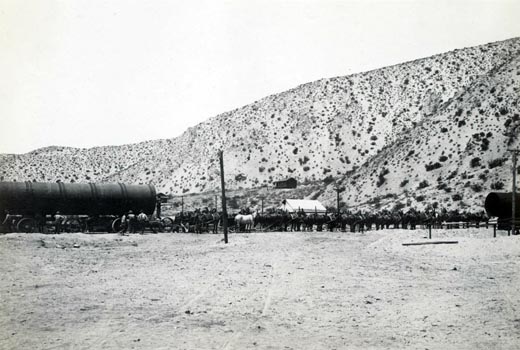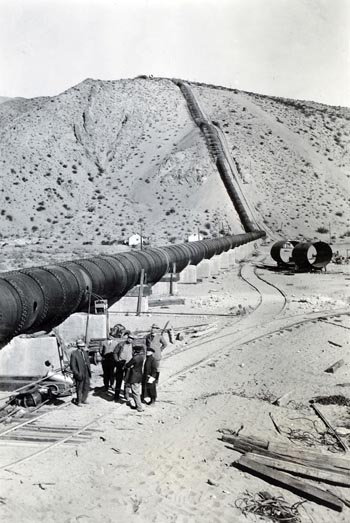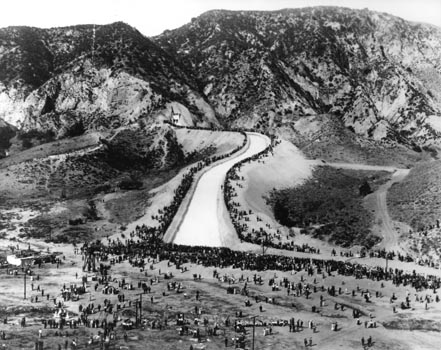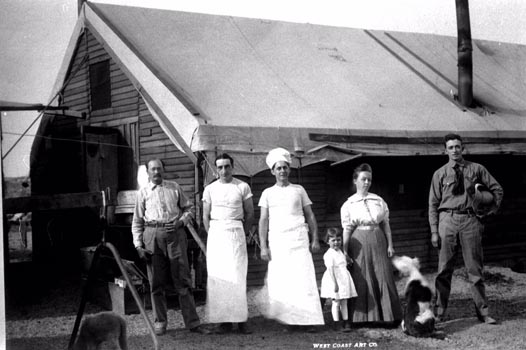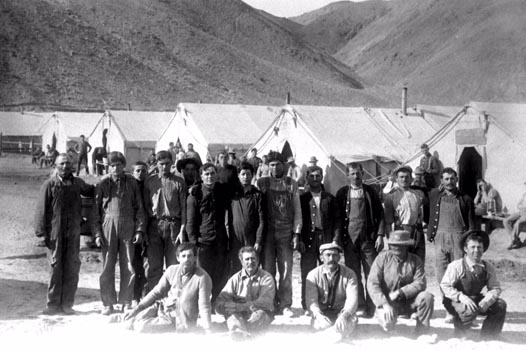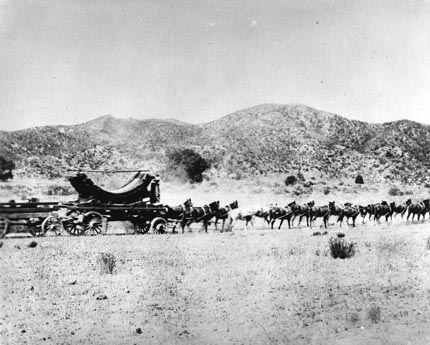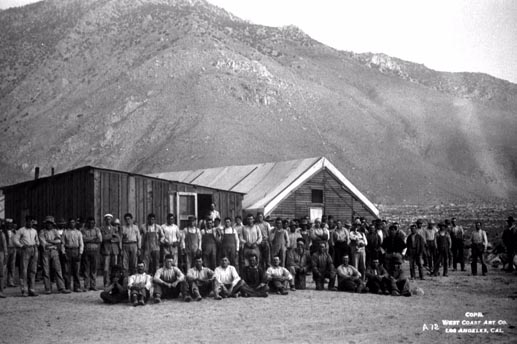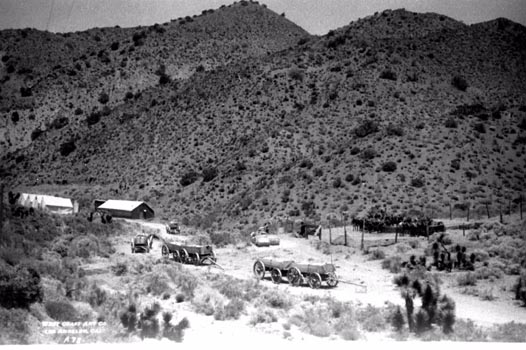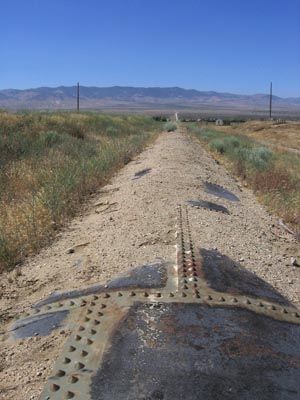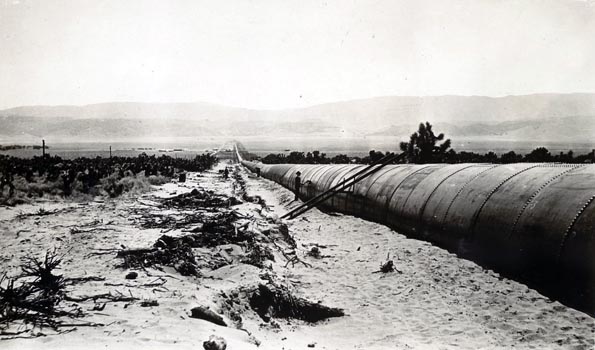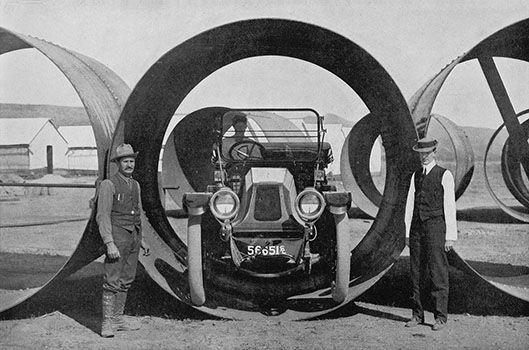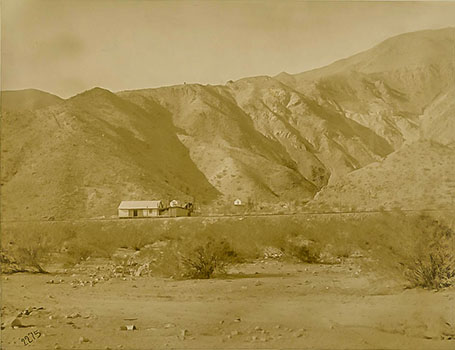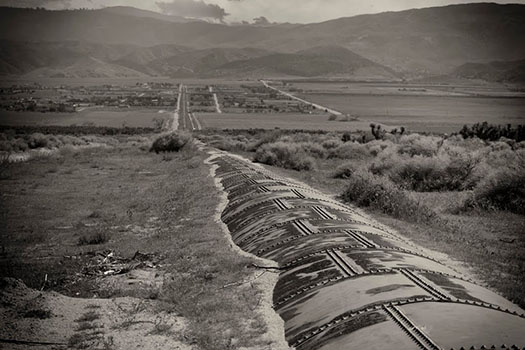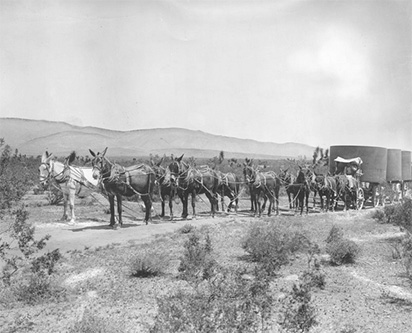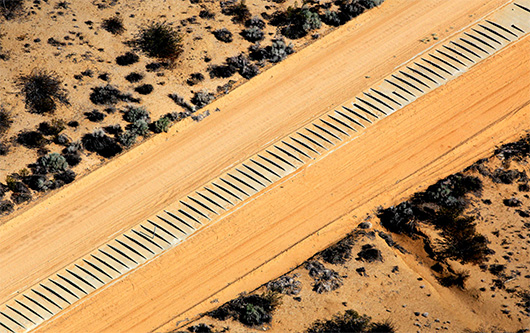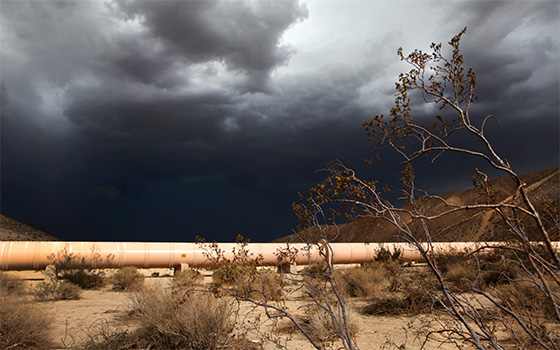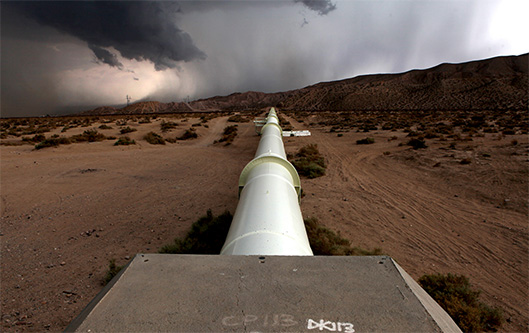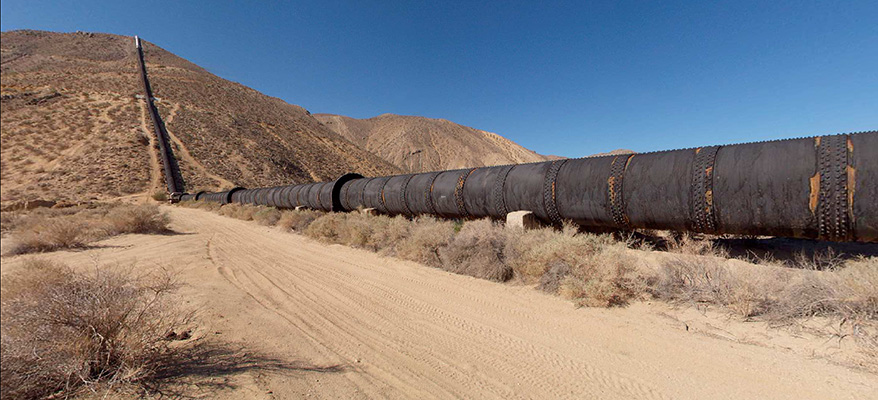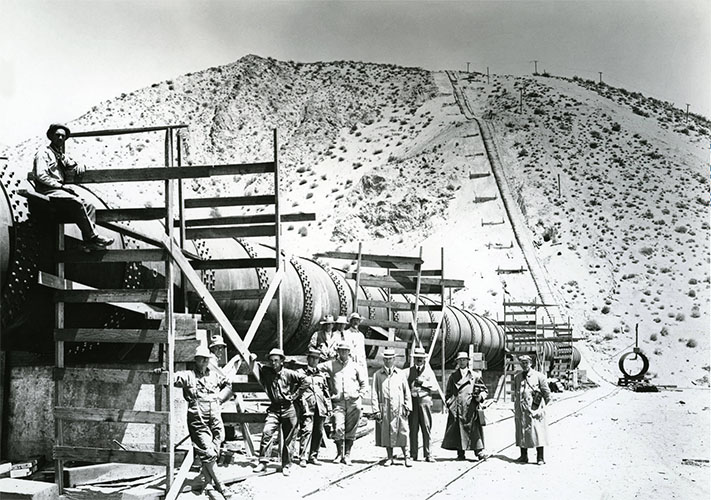
|
See USE NOTICE on Home Page. |
 AQUEDUCT JOB INQUIRY REPORT IS SUBMITTED Work on Huge Conduit Severely Condemned The San Francisco Call - 01 September 1912 |
LOS ANGELES, Aug. 31.— Work on "the Los Angeles aqueduct, which was begun nearly seven years ago, is rapidly nearing completion. Within five months' time, according to Chief Engineer Mullholland, the monster $25,000,000 conduit will be ready to carry the water of the Owens river 265 miles to the aqueduct outlet in.the San Fernando valley, from which point it will be distributed. In response to criticisms, a committee was appointed to make inquiry into the methods used in constructing the aqueduct, and this committee, after months of work, completed its report this afternoon. The report makes the following poinls: Condemns giving to one man practically entire control of aqueduct construction and management. Attributes to fictitious economies and the desire of the chief engineer to keep within his original estimate of cost inferior construction in many places. Condemns single pipe siphon construction. Pronounces unsafe the supports of steel siphons. Condemns the secret negotiations for land and water rights and holds the practice resulted in great loss to the city. Urges that suit be brought against Fred Eaton and others, for the recovery of lands retained by him. Condemns the exploitation of the enterprise by private interests for selfish purposes. Condemns the exploitation of the aqueduct by special private interests in municipal politics. Holds that the city's water rights in San Fernando valley are practically lost by the additional supply of water. Condemns the purity of the water and denies that the volume available is as represented. Condemns the Desmond mess contract, the system of aqueduct accounting and the system of compensation of workmen for injuries. Condemns the efforts of certain city officials to harass, discredit and defeat the investigation. |
Anatomy of a siphon
FORM AQUEDUCT HOSPITAL CORPS Phisicians Enter into Contract to Care for Employes, Who Will Pay by Month Los Angeles Examiner - 1908 |
Employee on the aqueduct are to be provided with adequate hospital facilities and medical and surgical attention. The cost to employes receiving $40 a month and over will be $1 a month; for those receiving less than $40 it will be 50 cents. Under rontract Dr. Rea Smith, Dr. E. C. Moore and Dr. Raymond Taylor have undertaken to organize a medical department. The contract is for the full time of the building of the aqueduct, but it may be terminated by either party on giving notice after four years. The city is to furnish suitable bu!ld!ngs for hospital purposes, each building to be large enough for six cots, with accommodations for a steward and a dispensary. All empioyes are to receive such surgical and medical attention as may be necessary. The city Is to provide wagon transportation to the field hosplcals, but In all cases where It Is necessary to send the patient to the general hospital In Los Angeles the contractors are to pay the railroad transportation to and from Los Angeles, to pay all hospital bills in the city, including any extra charge for surgical attention, for a period not to exceed sixty days for any single injury. The contractors are to have the right to examine all appllcants for work on the aqueduct, and to reject all those sufferlng from chronic ailments. They are not to be required to treat cases where injuries are sustained in brawls. There will be monthly Inspections of stock at cost plus 10 percent for motorcycles, automobiles or other conveyances used by the field medical start, and also ts to furnish wagon transportation for supplles. There fill be monthly Inspections of the camps, and the city wlll make changes recommended by the medical department. The contractors agree that any employee of the medical department who Is unsatisfactory to the city shall be discharged. The contractors have filed a bond for $2,500 with Dr. E. R. Smith and Dr. M. L. Moore as sureties. |
OWENS RIVER LOCO MAKES RUN FROM INDEPENDENCE Los Angeles Times - November 1910 |
| Dr. Edwin Janss and a party in a Locomobile came through from Independence last night, the first of The Times automobile tourers to return from the Owens River country. The Loco "forty" made the run of 256 miles from early morning yesterday until dark last night and Janss spent much of the time at the wheel. Robert M. Allen and Dr. P. Janss were the other members of the Loco party besides the chauffeur. Through the San Francisquito the Locomobile made excellent time as the forty horse power machine bounced through the fords of the long and winding stream. This was nothing though to the wonderful country visited in the vicinity of Independence, according to Janss, who took all the side trips. He covered more than 1000 miles since leaving with the other autos Saturday morning. According to Dr. Janss, the automobile trip through the Owens River Valley is one of the most interesting that can be arranged. He says the plans for the entertainment of the auto tourists worked like a charm. There was plenty to eat, gallons of gasoline to spare, tires aplenty, and enough oil to supply every machine. The roads in places were rough, but the cars got through. Janss says his Loco was only one of five of the same make of cars that made the jorney successfully. He had one blowout and two punctures. He is enthusiastic over the journey and returns with a healthful tan and is in good spirits after his rough fast ride of yesterday, when he made the run from Independence. Dr. Walter J. Lindley in his Packard is doing well, Janss says, and the car is bouncing along in splendid shape. Former Mayor Henry T. Hazard is coming through most of the time on "high gear" with his Stoddard-Dayton. Halloween night was a memorable one in Independence, says Janss. The autoists took the youngsters for rides in the machines. For many of the boys and girls it was their first ride in an automobile. Janss was anxioius to go to Bishop with The Times party yesterday, but was oblige to return home. He has taken many trips, but says the Owens River run is the best ever. |
Photos & Photocards Courtesy of Rich McCutchan Archives |
|
|
|
|
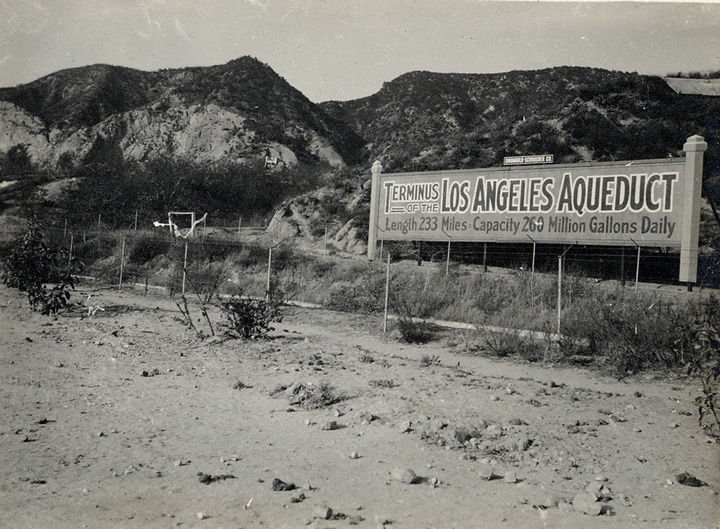
Photographs
courtesy of the Joseph Barlow Lippincott Papers, LIPP, The Water
Resources Center Archives, University of California, Berkeley, unless otherwise noted. |
|
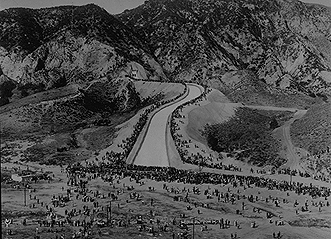
|
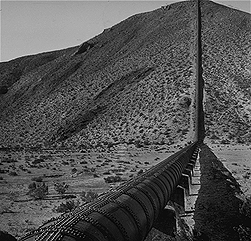
|
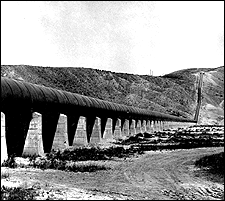 Aqueduct crossing the desert to one of the siphons. |
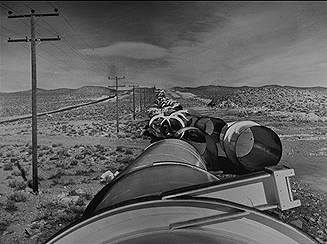 Aqueduct construction in the Mojave Desert. |
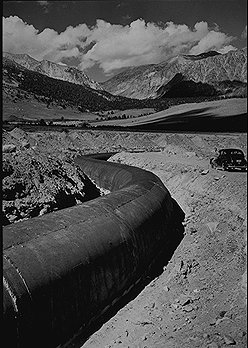 The aqueduct in Owens Valley. |
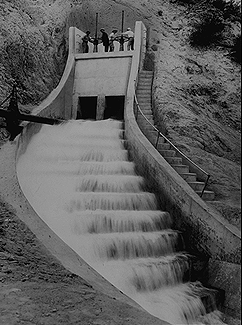 Aqueduct terminus in Los Angeles |
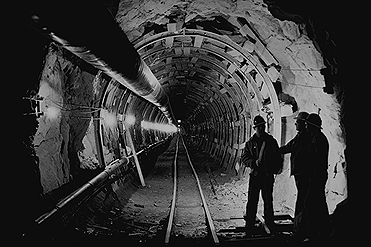 Aqueduct tunnel construction |
Photographs courtesy of the Library of Congress American Memory Project |
|
Souvenir Water from the opening of the Los Angeles Aqueduct at the Cascades in Sylmar/San Fernando, November 5, 1913. |
|
Photo courtesy of the water Resources Center Archives, Orbach Science Library, University of California, Riverside, CA, unless otherwise noted. All photos circa 1908 |
|
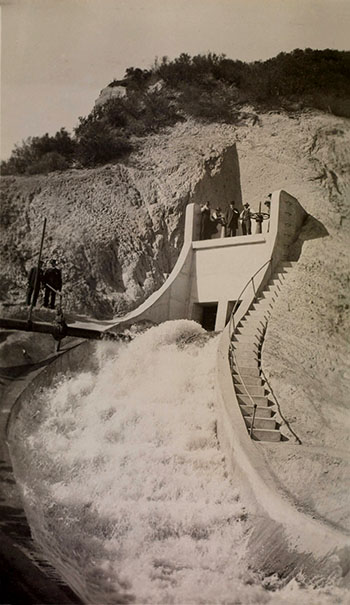 Men at the wheels opening Los Angeles Aqueduct at Sylmar Gate - 1913 The men who opened the gates as Roderick Mackay, chief construction engineer; H. A. Van Norman, Owens Valley division engineer; D. L. Reaburn, Saugus division engineer; A. C. Hansen, Jawbone Division engineer, and Adna R. Chaffee, Jr., U. S. Army. |
|
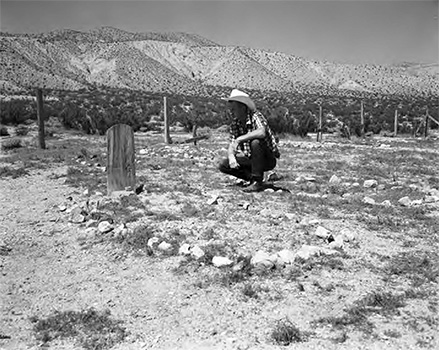 Whistling Dick gravesite - circa 1969 A sand-beaten, time-worn wooden standard and a circle of desert stones mark what is considered to be the grave of Whistling Dick, a colorful muleskinner remembered among the crewmen who labored to construct the Jawbone Siphon, one of the final links in the original Los Angeles-Owens River Aqueduct built between 1908 and 1913. - Stover Lowe, aqueduct patrolman, Aqueduct Divison. |
|
Aqueduct Construction Photos |
|
Source Unknown |
|
Photo courtesy of the California Transportation Library Digital Collection 1912 - Los Angeles Aqueduct, CA, Pasear Tour |
A word about the Pasear Tour - Inyo Good Roads Club This collection consists of the photographs taken of the 1912 California Pasear Tour by the McCurry Foto Company of Sacramento. The Pasear Tour was organized as part of the 1915 Panama Pacific International Exposition. Anticipating the completion of the Panama Canal in 1914, in 1911 the United States Congress decided the best way to celebrate would be to hold a world fair, and designated San Francisco as the host city for this exposition. There was an immediate flood of inquiries from all over the country, as to how to best see California by motor car. The Inyo County Good Roads Club proposed that a statewide tourist route be mapped, called the Pasear Tour, that would "present to the tourist the sublimity of the ocean, the desolation of the desert, the grandeur of the Sierras, and the fertility of the valleys." The route would cover three of the principal roads: El Camino Real (San Francisco to San Diego); El Camino Sierra (Los Angeles to Lake Tahoe); and El Camino Capital (Lake Tahoe to San Francisco). The Inyo proposal received support and sponsorship from the American Automobile Association, California Governor Hiram Johnson, the Studebaker Corporation and the California Highway Commission, among others. Maps were produced and the inaugural tour took place in 1912. The motorists consisted of Inyo Good Roads Club members, sponsor representatives and newspaper correspondents. The McCurry Foto Company went along with the caravan of Studebaker E-M-F automobiles and documented the journey in photographs. The tourists embarked from the Palace Hotel in San Francisco on June 10, 1912 and followed El Camino Real south (roughly current US 101/Interstate 5 routes) through Los Angeles to San Diego/Tijuana and then back to Los Angeles. The caravan then took the El Camino Sierra route (now roughly Highways 99 and 395), through the desert country and north up the eastern side of the Sierra Nevada to Lake Tahoe. The tour then pursued the El Camino Capital route (now US 50/Interstate 80), completing the 2,000 mile loop at the Palace Hotel on July 9, 1912. |
|
|
20-Mule-Team History | |
|
|
Manzanar Internment Camp Portraits, History etc. | |
|
More Owens Valley Aqueduct Portraits & History |
|
|
| . |
Mt. Whitney Pack Trains 1950s Brochure |
|
|
Bessie Brady Steamer |
|
Sign Guestbook View Old Guest Book Entries Oct 1999 - Feb 2015 (MS Word) |
 CONTACT the Pigmy Packer |
View Guestbook View Old Guest Book Entries Oct 1999 - Feb 2015 (PDF) |
